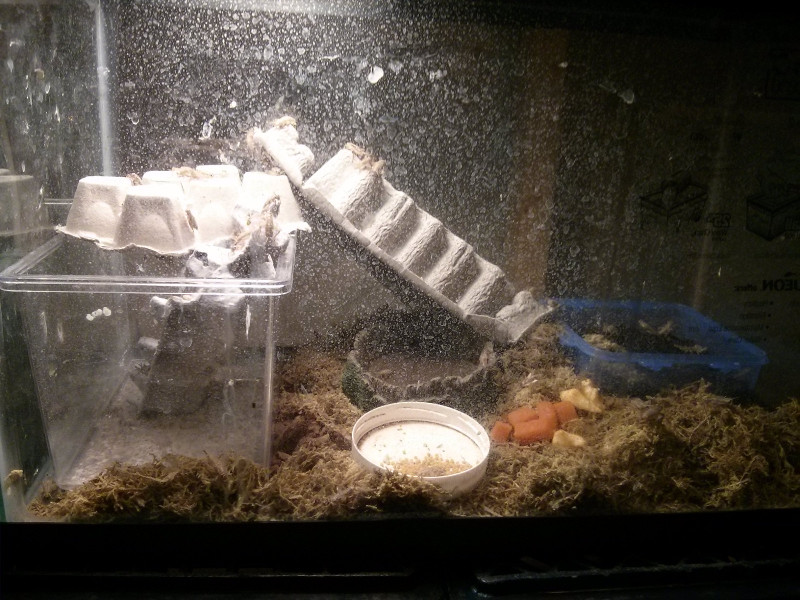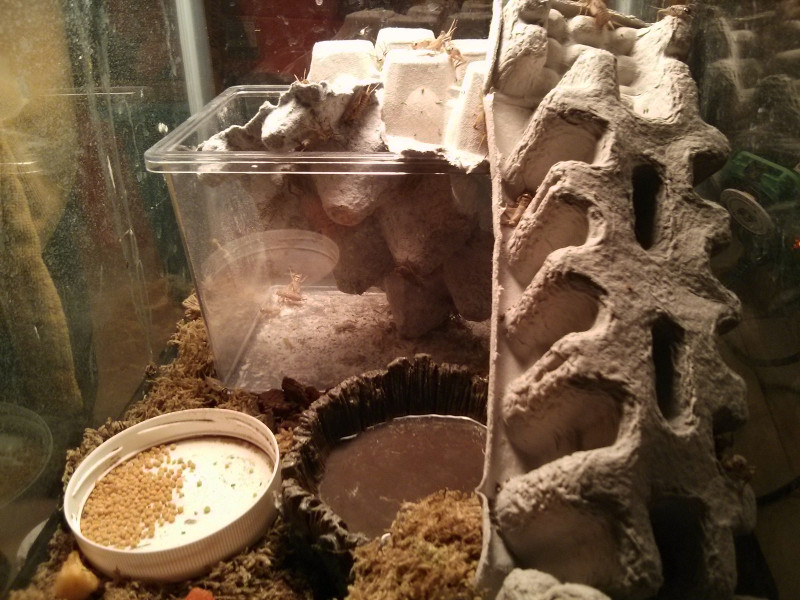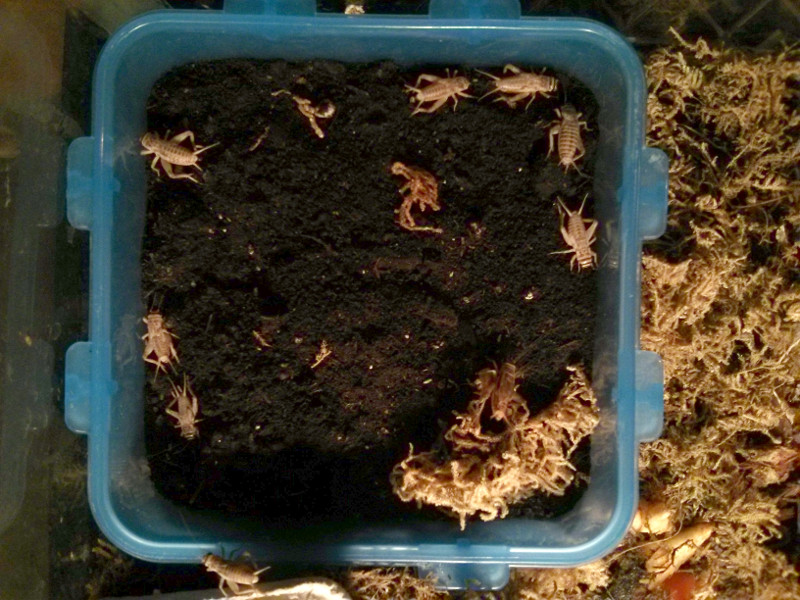This article is the first of a series chronicling my latest attempt to breed crickets. I have only done this by accident in past, by inadvertently creating the conditions that make them want to reproduce. The purpose is to more easily provide an ongoing food source for our crested gecko. These are not for human consumption; that is gross.
Tyler
My wife and I have shared a pet Crested Gecko named Tyler since 2007, with a break last year when staying with a friend and his son renamed him "Chainsaw". Here is a photo of him from 2007. He looks much older now.
Tyler is a New Caledonian Crested Gecko or Eyelash Gecko. These geckos were thought to be extinct in the 90s. They make great pets and are very affectionate. Since geckos don't have eyelids, Tyler is probably cleaning his eyeballs with his tongue here.

Set Up
After reading a few suggestions on WikiHow and some other websites dedicated to the subject, I went about buidling my own version. I didn't have a suitable plastic container to modify but I did have a small aquarium that a previous pet had lived in, and a wire mesh lid. I also had another lamp though only had a regular bulb not a heat bulb. Since the lower temperature might reduce the likelihood of breeding, I plan on replacing it with something more suitable further on.

The Cricket Hotel
On the left you will see a typical cricket keeper that I purchased from Southwestern Pet. I had already put the crickets in the keeper before setting up the aquarium so I decided to just put the entire container in the aquarium. I angled the egg cartons so that the crickets could climb out and found another carton that they could climb back up to be near the light. I put in some dry food pellets, apple slices, Fluker's Orange Cube cricket food and a very shallow dish of water. I highly recommend using the cricket food cubes, they provide nutrients and moisture without much mess. For ground covering, I used terrarium wood chips on the bottom with ExoTerra Forest Moss substrate on top. This is the same substrate I use in my gecko terrarium. I've noticed that crickets seem to enjoy hiding in it and climbing up it. I used small clumps of substrate around the containers to make it easier.

Breeding
The recommended breeding environment is a shallow container filled with moist soil. In the past, I have accidentally created this environment in the gecko enclosure but without any control it wasn't sustainable. Crickets are curious and they'll check out the dirt pretty quickly. The male crickets have two protrusions from their butt while female crickets have three. The males are a bit small and only develop wings to the point of creating the chirping sound. The substrate is in the container in case they have trouble climbing out.

More To Come
I will be following up on the progress of this set up. It isn't perfect but since I've had luck breeding crickets by accident, I'm hoping that it is adequate to justify the effort. If you have any tips for breeding, please add them to the comments below.




